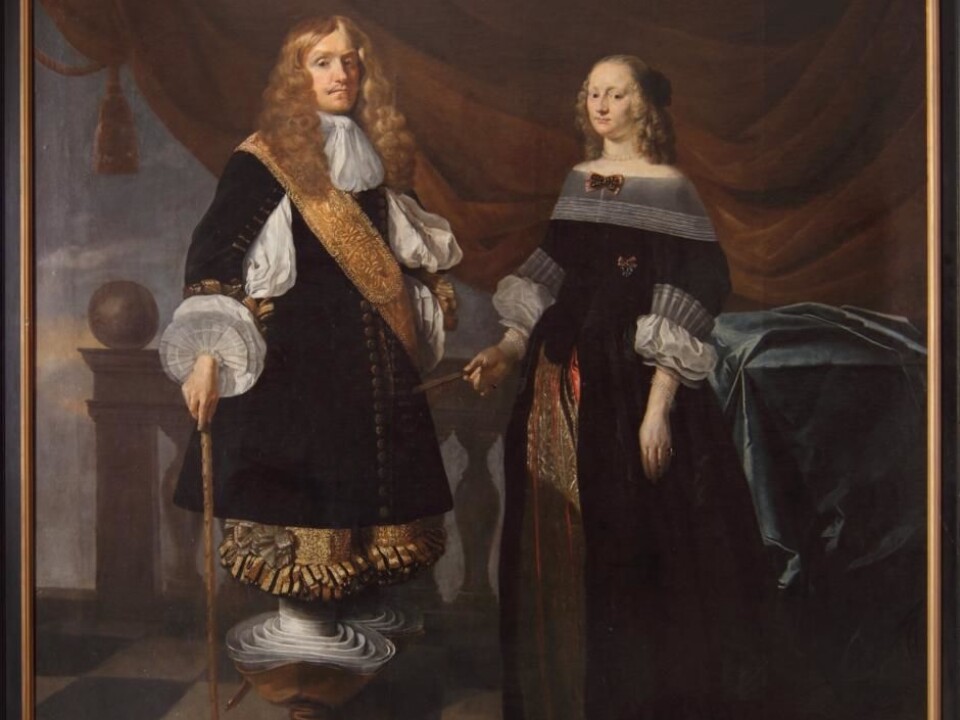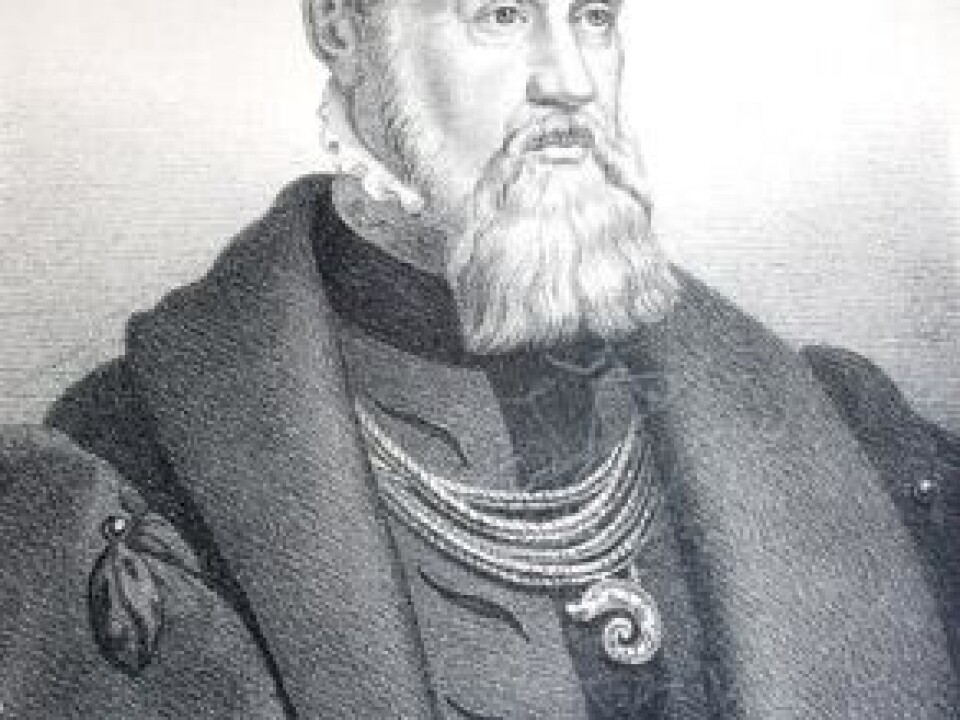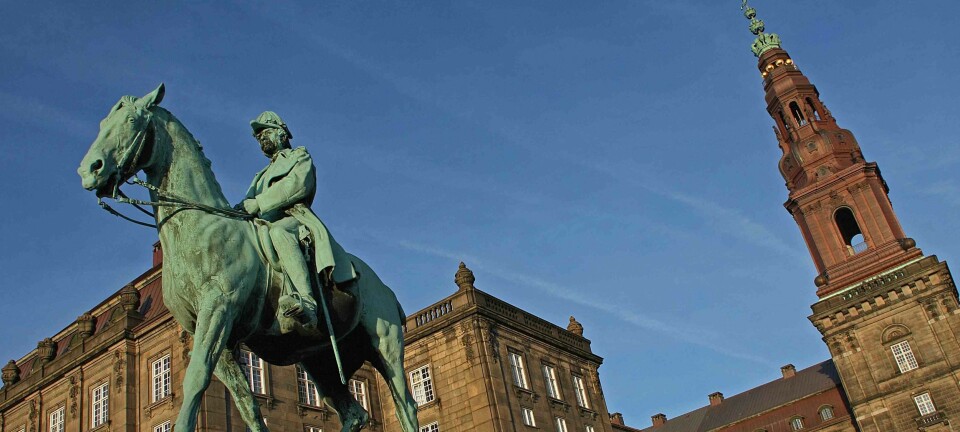
The Reformation transformed the aristocracy from warriors to bureaucrats
As the king consolidated power, the ruling class adapted to maintain its influence.
In 1517 CE, the Wittenberger monk Martin Luther published his 95 theses against the Roman Church and not long thereafter Europe was in religious turmoil.
Scandinavia, and especially Denmark, became one of the most reformation influenced regions in Europe. And this was most keenly felt in changes to the way in which the government was run.
Before the Reformation, the king, church, and the aristocracy, were equals in the Council of the State, the government of the time, and almost equals in all economic and political matters.
This all ended in 1536 when Christian III brought the Reformation to Denmark.

Shortly after, the crown seized the church’s lands, and in 1537 Christian III was made the head of the – now Lutheran – church, which meant that the royal power now dominated the aristocracy both politically, militarily, and economically.
At the same time, a military revolution was under way in Europe, which rapidly outdated the aristocratic war technology. This posed a serious problem for the aristocracy since it drew its legitimacy and power from its social position as a military group.
The Danish aristocracy had to rethink how to legitimise itself to avoid losing influence and power – something that the Count’s Feud (1534-1536), a peasant rebellion and civil war that ultimately led to the Reformation of Denmark, had shown to be a possibility that had to be taken seriously.
Read More: The Norwegian constitution: from autocracy to democracy
Aristocratic power before the Reformation

The aristocracy enjoyed great wealth in the years before the Reformation, with a monopoly over important positions and other privileges.
Around the 1500’s a population growth spurt led to economic boom. But the availability of more people to work the land meant that the landowners could pressure new farmers into contracts that were more advantageous to the ruling class.
Some aspects of the contract could not be tampered with, such as the annual land tax. This was the payment that farmers should make each year to the landowner for use of the buildings and the land.
But other charges, such as the initial payment for renting a plot of land, were more or less decided by the land owner. This allowed the aristocracy to collect additional fees equal to half of the land tax – but placed a tremendous burden on the farmers.
In this environment, the upper nobility in particular started to push the boundaries, both in relation to the farmers on their land and the royal power. In the middle of the 16th century, the nobility introduced a number of privileges for themselves, including monopoly on positions of power – as well as tax exemptions.
Read More: Mixed messages in Christian sex education
The Count’s Feud was an eye-opener
The peasantry no doubt saw this as a power grab, attacking the rights they had fought for during the 1400s. And some reacted. In North Jutland in 1531, the nobleman and state council member Mogens Munk was forced to flee Viborg Landsting – one of the three main assemblies in Denmark at that time – with a group of angry peasants close at his heels.
A few years later, the Danish merchant and privateer Skipper Clement, led the peasant rebellion in North Jutland during the Count’s Feud, plundering and burning manor houses as they went. Even more aristocrats fled for their lives.
Skipper Clement lost the war and his head in 1536, but his actions had prompted the nobility to come up with another way of legitimising their power, and not just as a military power.
Read More: Minimal corruption in Denmark began with the absolute monarchy
Old power in new clothes
Luther had provided the king with religious and political legitimacy when he published his Doctrine of the Three Estates, which divided society into church, family, and state.
To legitimise their power and avoid a repeat of the Count’s Feud, the nobility positioned itself as a part of the third estate, the government.
They set out to fulfil the Lutheran ideals of authority as the righteous fathers and mothers of the people. They should be merciful and always set a good example, well-trained in the new faith, and able to fulfil official positions in the emerging, centralised government.
This Lutheran picture of authority combined with military revolution, the process of forming the modern Danish state, and consolidation of the new religion in society, created an increased need for highly educated officials. In doing so, the nobility transformed themselves from warriors to a bureaucratic machinery.
What followed was an explosion in education. From 1536, young aristocrats suddenly travelled in large numbers to educate themselves. Initially in theology, but later in the ways of governance via meetings with Martin Luther, Philip Melanchthon, and others.
Read More: The first Danish kings were pirates
The long reformation
The reformation officially came to Denmark in 1536. Measures implemented by Christian III from this date changed the political and religious landscape and heralded the adoption of Lutheranism in Denmark and Norway, which were one kingdom at this time.
But society did not change overnight, and in reality it took several generations before the new religion slowly trickled down into to all walks of life. Nordic historians often refer to this as The Long Reformation.
The 16th and 17th centuries were a dynamic period, where the powerful elite negotiated precisely how the Reformation would shape the country, the role of the monarch and the nobility, and the nature of relations with other states.
The aristocracy played a central role as members of the government, judiciary, and owners of the church and goods. They shaped the law and confronted the practical challenges posed by the Reformation at a local level. To do so, they clearly needed to increase their theological competences in order to differentiate between all the religious sects of the day: Catholics, Calvinists, Philippists, Conservative Lutherans, and so on.
Read More: Iceland's crowd-sourced constitution: hope for disillusioned voters everywhere
Aristocratic legitimization of power
The Reformation gave the aristocracy monopoly over all higher offices, and the aristocracy thus played a central role in consolidating and supporting Lutheranism. Simultaneously, they needed to legitimise their right to positions of power in society, which they had inherited during the 16th century.
Luther had imagined that a nation’s citizens were a part of a family: in this view, the authorities were the “parents” of the people and responsible for them. Just as parents supported and helped their children, so the aristocracy, as representatives of the state, should take care of the people’s welfare, especially the poor, the church, and the education system.
Support for these welfare institutions can be seen as a form of self-marketing on behalf of the nobility, securing their position as the rulers of society.
Their support of welfare institutions was praised in long speeches over the deceased and printed in book form. They emphasised their Lutheran credentials, legitimising their position and power.
They made charitable donations to the church and in doing so, orchestrated themselves as the “parents” of society.
The Reformation changed the ideals and responsibilities of the aristocracy. They became a fully integrated part of the state. The Reformation did not just transform religion, but society and identity itself.
---------------
Read this article in Danish on ForskerZonen, part of Videnskab.dk
Translated by: Catherine Jex









